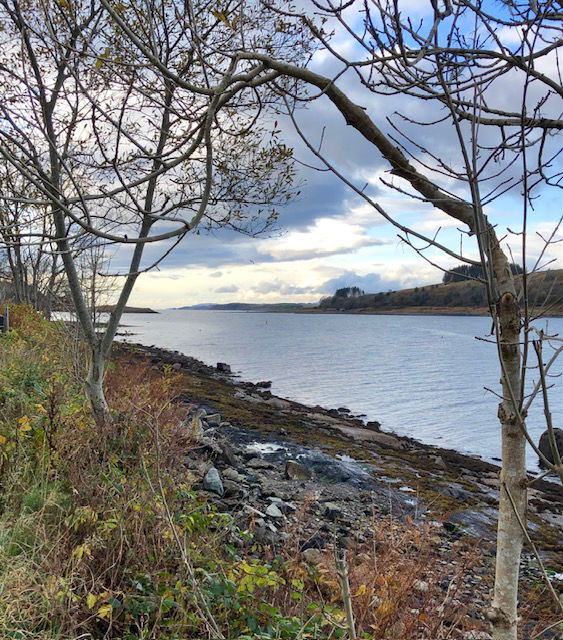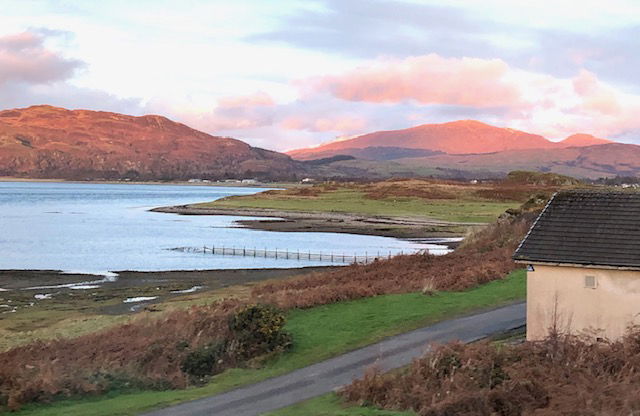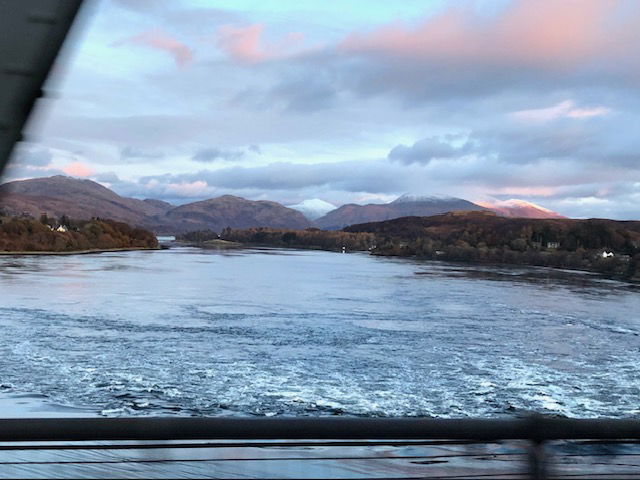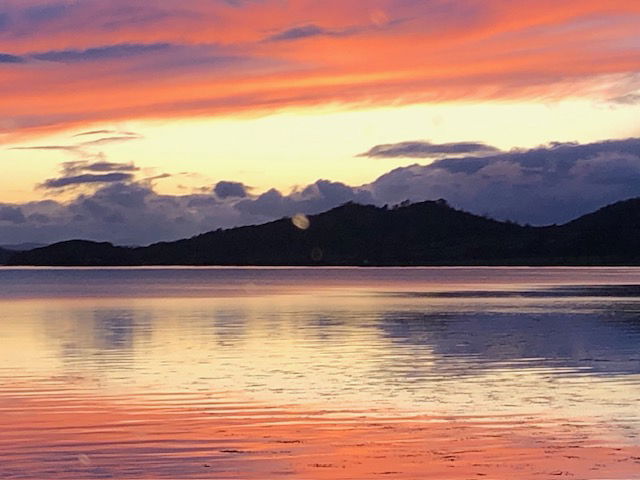Loch Linnhe, Scotland
While driving from Duror for our daytrip to Oban, for the first few miles we traveled along the east shore of Loch Linnhe. This loch is really an arm of the sea, so it is affected by the tides. The photo below shows that at the moment, it is low tide. The little tower-like edifice out on the rocks is a castle ruin.

The shore across Loch Linnhe to the west is part of the mainland of Scotland. Even though Scotland is part of the larger island which also contains England and Wales, Scotland boasts 900 off-shore islands, a few of which we saw from Oban (see last post).

After exploring Oban for the day, we headed back to our campsite, enjoying the gloaming, or twilight, hour.

A few miles north of Oban, we crossed Connel Bridge, which spans the narrow Loch Etive. We had crossed in the morning on the way down and noticed the strong current, called the Falls of Lora. Because the loch is an arm of the sea, it is affected by the tides. The narrowness of the channel coupled with the swiftness of the tide means that the falls flow in either direction. For example, when we crossed in the morning the tide was flowing out to sea and to the west. In the photo below, as we crossed the bridge at sunset, the tide was flowing back in and to the east. The falls are popular with kayakers, especially at flood tides. Fascinating!

As we made our way along the shore of Loch Linnhe, and back to our campsite in Duror, we were treated to a gorgeous Scottish sunset. A lovely way to finish a delightful day in western Scotland.
